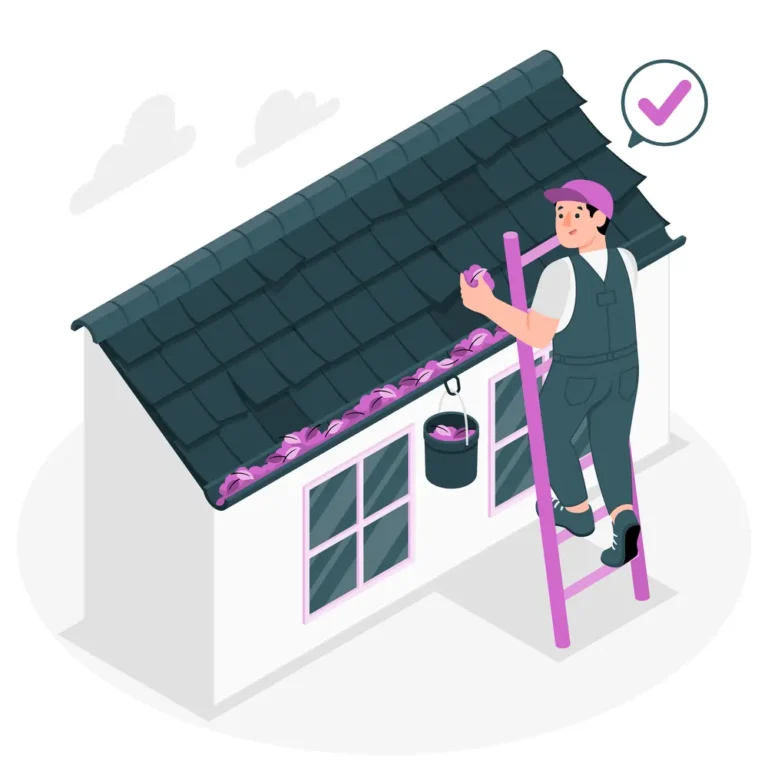Are you tired of looking at your dirty, moss-covered tile roof? You’re not alone. Many homeowners struggle with tile roof cleaning, unsure how to tackle this crucial roof maintenance task. But ignore it at your peril – a neglected roof can lead to costly damage and even health hazards. Let’s dive into the world of tile roof care and discover how to keep your home’s crown jewel sparkling clean and sturdy for years to come.
Tile Roof Cleaning
Tile roofs are popular for their durability and aesthetic appeal, but like all roofing materials, they require regular maintenance. One of the most critical steps in maintaining your tile roof is cleaning it, yet this is often overlooked! Did you know that algae and mold build-up on your roof can shorten its lifespan by years? If you’re ready to protect your investment and improve your home’s curb appeal, let’s dive into the best practices for tile roof cleaning in 2024. From professional tips to DIY advice, this guide has you covered!
Why Regular Tile Roof Cleaning is Essential
Keeping your home’s roof in top shape means you’ve got to clean your tile roof regularly. Regular roof cleaning helps prevent those nasty stains caused by algae and debris. There are a few main methods to get the job done, like using a pressure washer or a softwash. If you’re unsure about the best roof cleaning method, it’s smart to consult a professional tile roof cleaner.
When you’re cleaning your clay roof tiles, it’s best to use low pressure to avoid damaging the tiles. A gentle tile roof wash with a nozzle and chlorine bleach can help rinse off dirt and grime. Make sure to follow recommendations for cleaning to ensure you don’t harm the whole roof.
For a proper tile roof cleaning process, you might need to apply a sealant after the wash. This helps in maintaining the exterior cleaning and longevity of your roof tile. Remember, roof tile cleaning isn’t just about making your roof look good; it’s about protecting your investment.
Imagine waking up to find water dripping from your ceiling. That nightmare scenario could become reality if you neglect your roof. Here’s why regular cleaning is a must:
Prevents damage from algae, moss, and debris build-up
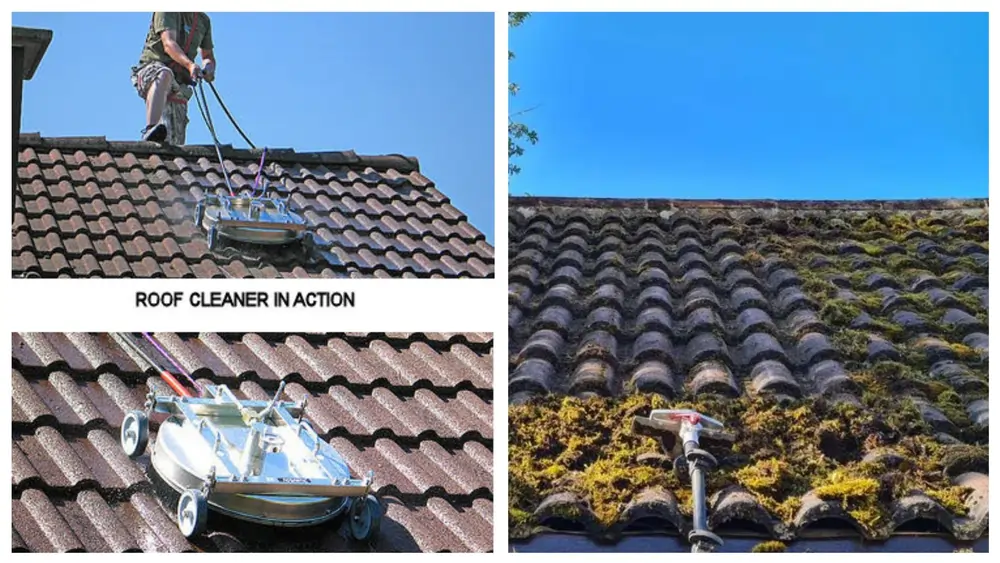 Left unchecked, these unwanted guests can wreak havoc on your roof. Algae and moss trap moisture, leading to rot and decay. Debris can clog gutters, causing water to back up and seep under tiles.
Left unchecked, these unwanted guests can wreak havoc on your roof. Algae and moss trap moisture, leading to rot and decay. Debris can clog gutters, causing water to back up and seep under tiles.
Prolongs the lifespan of your tile roof by reducing wear and tear
A clean roof is a happy roof. Regular cleaning removes abrasive particles that can wear down your tiles over time. This simple step can add years to your roof’s life.
Enhances your home’s appearance, boosting curb appeal
First impressions matter. A sparkling clean roof can make your whole house look newer and well-maintained. This is especially important if you’re planning to sell.
Reduces energy costs by maintaining the roof’s reflective properties
Did you know a dirty roof can increase your energy bills? Dark stains absorb heat, making your AC work harder. Clean tiles reflect sunlight, keeping your home cooler.
Protects the underlayment from premature degradation
The underlayment is your roof’s unsung hero. Keeping it dry and protected from debris ensures it can do its job of waterproofing your home.
Common Types of Tile Roofs and Their Cleaning Requirements
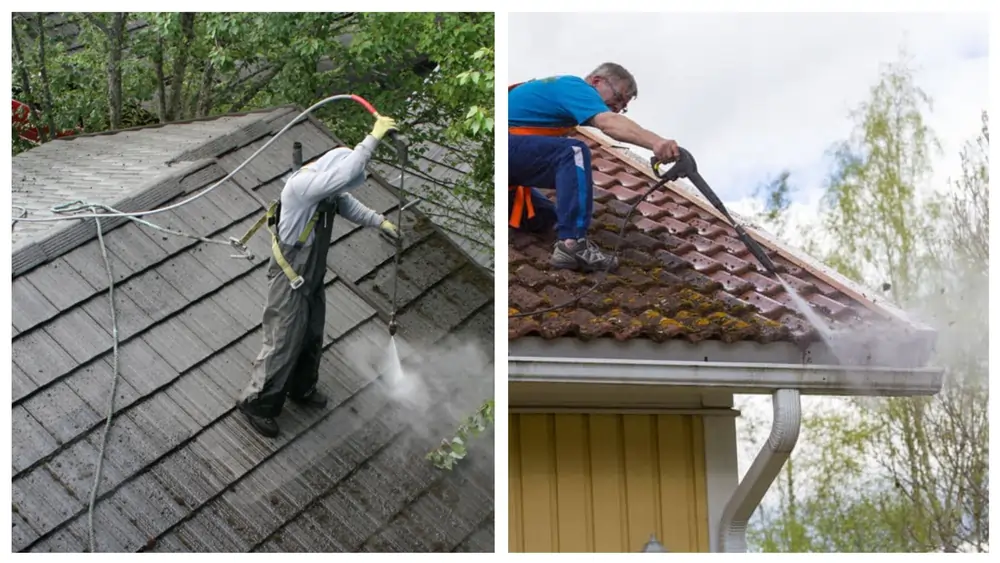 Hey there! If you want to clean your roof and keep it in top condition, you need to know the common types of tile roofs and their cleaning requirements. Whether you have clay, concrete, or slate tiles, the way to clean them without causing damage involves using the right techniques and products. For instance, clay tiles can be delicate, and you should avoid pressure washing them. Instead, a gentle scrub with a garden hose can help remove dirt and mold spores without causing any harm.
Hey there! If you want to clean your roof and keep it in top condition, you need to know the common types of tile roofs and their cleaning requirements. Whether you have clay, concrete, or slate tiles, the way to clean them without causing damage involves using the right techniques and products. For instance, clay tiles can be delicate, and you should avoid pressure washing them. Instead, a gentle scrub with a garden hose can help remove dirt and mold spores without causing any harm.
Concrete tiles are more durable but still require proper care. Using a bleach-based cleaner can help get rid of black algae and stains caused by mold. Just make sure to rinse everything thoroughly to prevent any residue that might damage the tiles. Slate tiles, on the other hand, need special attention due to their weight and the way the tiles overlap. It’s best to hire someone professionally at least once a year to ensure they’re cleaned properly.
Don’t forget about proper drainage to avoid water damage and mold growth. Also, keep an eye on your local weather conditions as they can affect how often you need to clean your roof. If you attempt diy, make sure you have good traction to avoid accidents. And hey, if you’re into sharing tips, why not upload original content to the world on youtube? Just remember, a clean roof not only looks good but also prevents those unsightly dirt and debris buildups that can cause serious issues down the line.
Not all tile roofs are created equal. Let’s break down the most common types and their unique cleaning needs:
Clay Tiles: How they resist mildew but accumulate debris
Clay tiles are naturally resistant to mildew, but their textured surface can trap leaves and dirt. Regular debris removal is key to maintaining these classic beauties.
Concrete Tiles: Prone to discoloration and moss growth
Concrete tiles are sturdy, but they’re also porous. This makes them a magnet for moss and algae. Regular cleaning and application of algae inhibitors for roofs can keep them looking fresh.
Slate Tiles: Durable but delicate – what you need to know before cleaning
Slate is a premium roofing material that can last a century – if cared for properly. Gentle cleaning methods are a must to avoid chipping or cracking these valuable tiles.
Metal and Synthetic Tiles: Understanding their maintenance and cleaning specifics
These modern options often require less maintenance, but they’re not immune to dirt and grime. Regular cleaning helps maintain their protective coatings and aesthetic appeal.
Safe Methods for Cleaning a Tile Roof
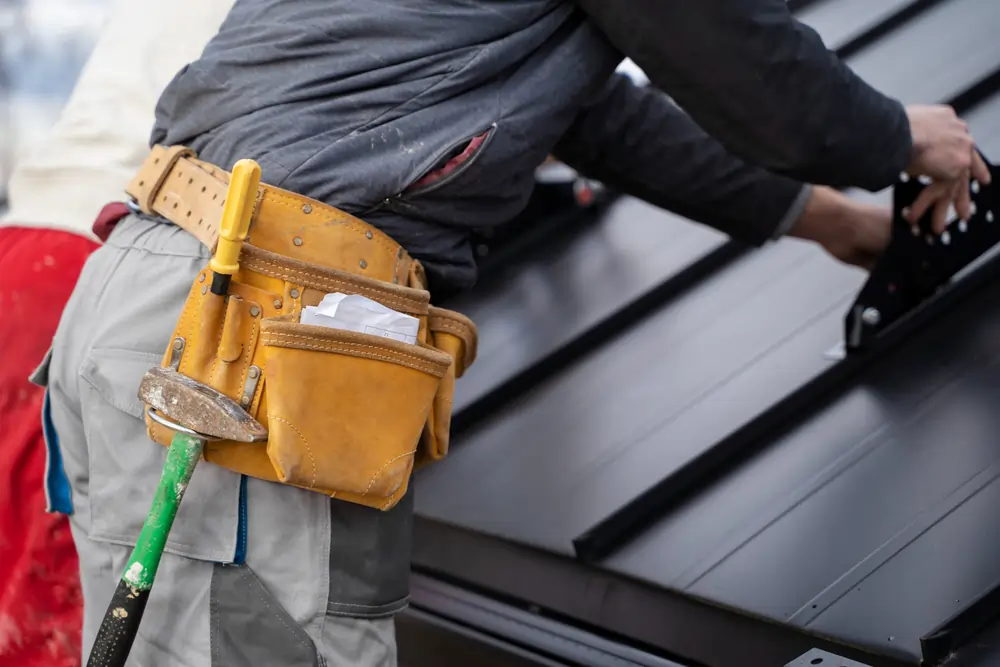 Hey there! If you wanna clean your tile roof without causing damage, make sure you avoid using pressure washers without proper training. Instead, use a gentle cleaner and a soft brush. Also, be cautious and don’t step on more than least 12 tiles per square foot to keep things safe and sound!
Hey there! If you wanna clean your tile roof without causing damage, make sure you avoid using pressure washers without proper training. Instead, use a gentle cleaner and a soft brush. Also, be cautious and don’t step on more than least 12 tiles per square foot to keep things safe and sound!
Now that we understand why cleaning is crucial, let’s explore how to do it safely:
Pressure Washing: Pros and cons for different tile materials
Roof pressure washing can be effective, but it’s not suitable for all tiles. Clay and concrete tiles can handle higher pressure, while slate and some synthetics require a gentler touch. Always use the correct tile roof pressure washer psi to avoid damage.
Chemical Cleaning Solutions: Which ones are safe and eco-friendly?
Roof cleaning chemicals come in many forms. Look for eco-friendly roof cleaners that won’t harm your plants or the environment. Oxygen bleach is a popular choice for its effectiveness and safety.
Soft Washing: Why it’s a popular choice and how it works
Soft wash roof cleaning uses low-pressure water combined with specialized cleaning solutions. This method is gentle on tiles while still tackling tough stains and growth.
Manual Scrubbing: When and how to use this traditional method
For small areas or delicate tiles, good old-fashioned elbow grease might be the best approach. Use a soft-bristled brush and work carefully to avoid damaging the tiles.
Moss and Algae Inhibitors: Preventative treatments to keep your roof clean for longer
After cleaning, applying a zinc strip or other algae inhibitors for roofs can help prevent regrowth. This proactive step can extend the time between cleanings.
Tile Roof Cleaning Tools and Equipment
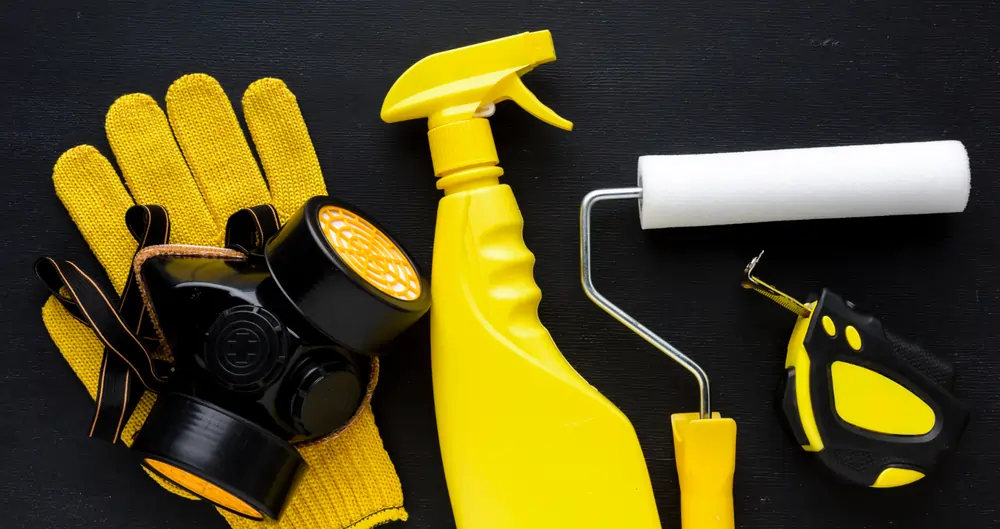 Having the right tools makes all the difference. Here’s what you’ll need:
Having the right tools makes all the difference. Here’s what you’ll need:
- Pressure washer (with adjustable PSI)
- Eco-friendly cleaning solutions
- Roof-safe ladders and harnesses
- Soft-bristled brushes
- Protective gear (gloves, eye protection, non-slip shoes)
Professional Roof Cleaning Services vs. DIY: Which is Best?
The age-old question: should you hire a pro or tackle it yourself? Let’s weigh the options:
Professional Services: Costs, what to expect, and choosing the right contractor
Pros have the experience and equipment to do the job safely and effectively. Expect to pay between $300-$600 for a professional cleaning, depending on your roof size and condition.
DIY Cleaning: Safety considerations, time commitment, and costs saved
DIY can save money, but it comes with risks. You’ll need to invest in equipment and take proper safety precautions. It’s also time-consuming – expect to spend a full day or more on the job.
Common Mistakes to Avoid When Cleaning a Tile Roof
Even well-intentioned homeowners can make mistakes. Here are some pitfalls to avoid:
- Using too much pressure, which can crack or loosen tiles
- Not wearing proper safety gear, leading to accidents
- Ignoring algae and mold treatments, which cause long-term damage
- Using the wrong chemicals that could harm plants or damage the roof surface
- Waiting too long between cleanings, allowing debris to accumulate
Remember, when in doubt, consult a professional. Your roof is too important to risk damaging it with improper cleaning techniques.
Conclusion
Tile roof cleaning is one of the most important maintenance tasks homeowners can undertake. Not only does it protect your roof from damage, but it also preserves its beauty and energy efficiency. Whether you choose to do it yourself or hire professionals, staying on top of regular cleanings will extend the life of your roof and protect your investment. Now that you know the best practices and methods, what’s your next step? Give your roof the care it deserves today!
By following these best practices for tile roof cleaning, you’ll not only enhance your home’s appearance but also protect one of its most valuable assets. Regular maintenance is the key to a long-lasting, beautiful roof that will serve you well for decades to come. So, are you ready to give your roof the care it deserves?
